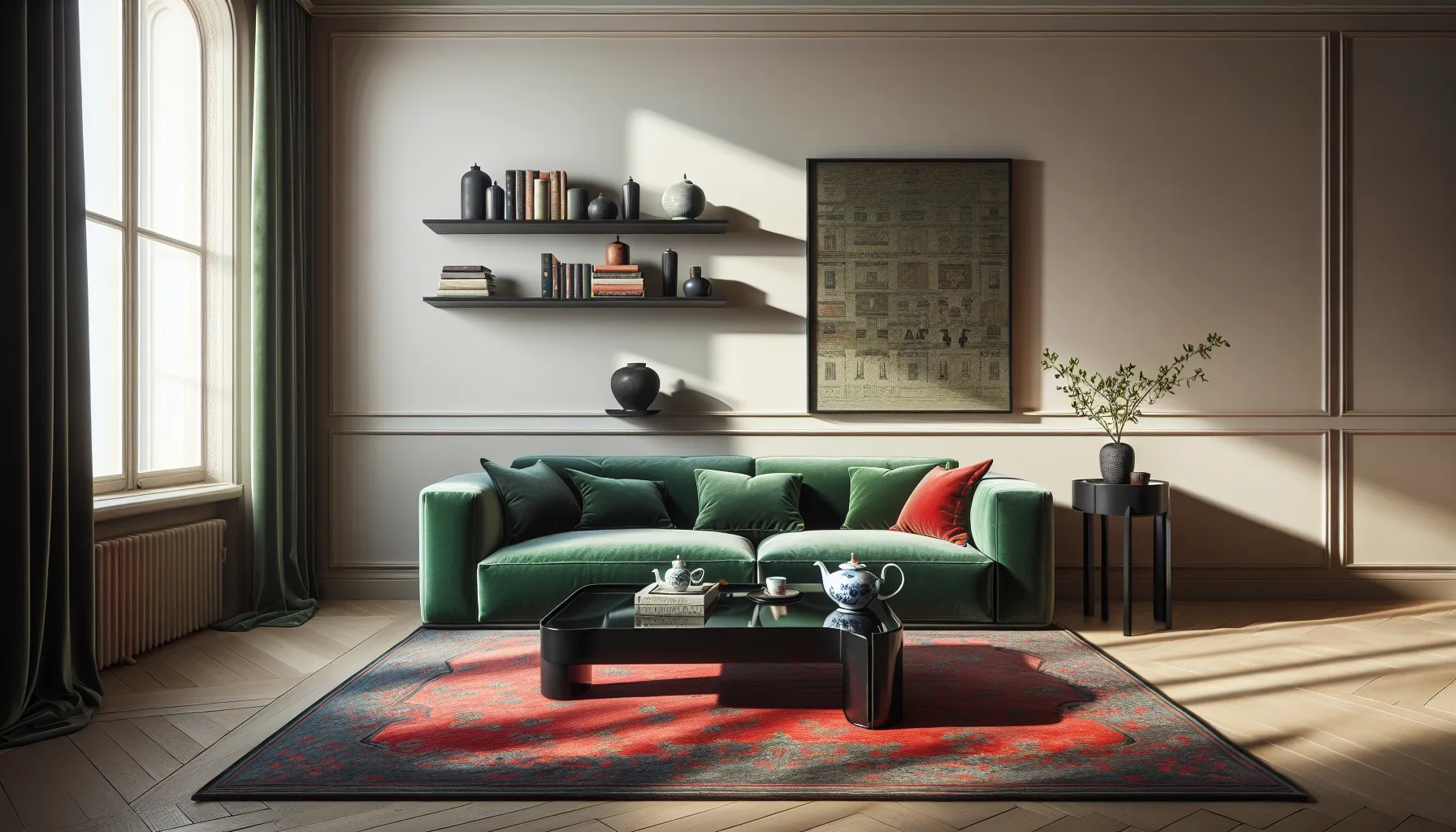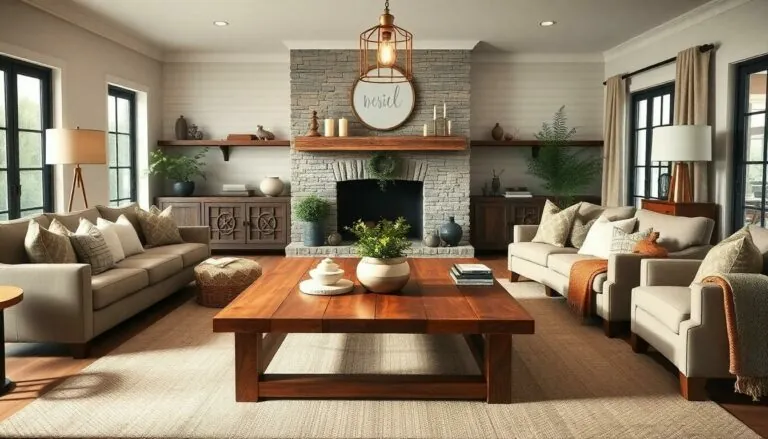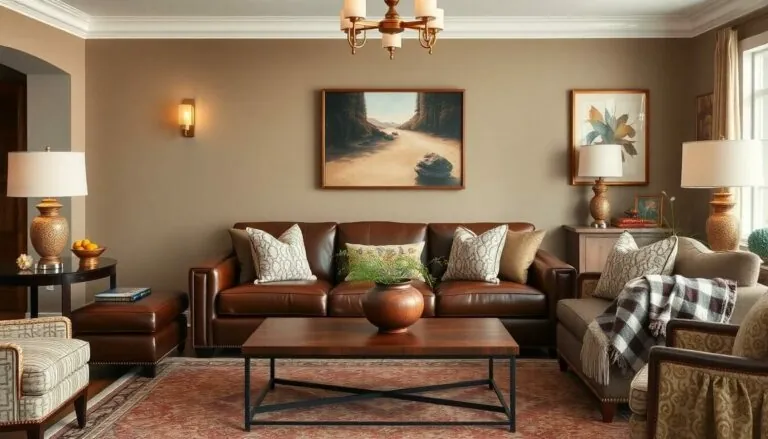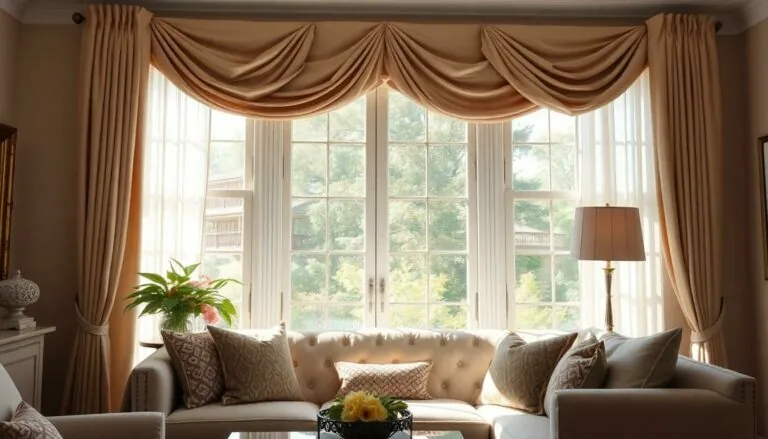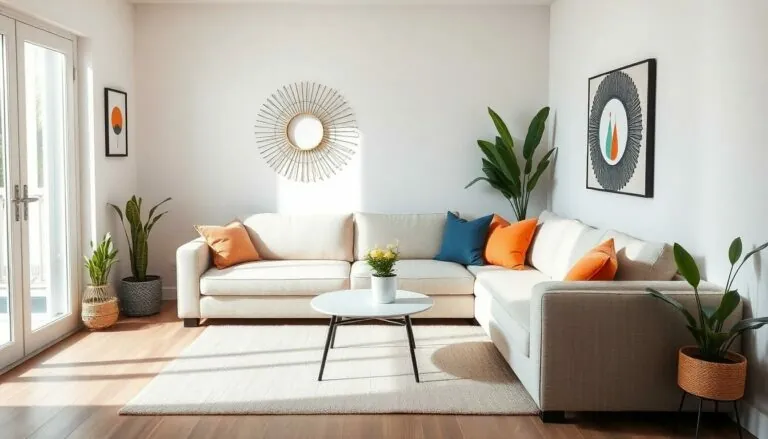Table of Contents
ToggleChoosing the right colors for a living room can feel like trying to pick a favorite child—impossible! Yet, the right hue can transform a space from drab to fab faster than you can say “color wheel.” Whether it’s a calming blue that whispers relaxation or a bold red that screams, “Look at me!” the colors you choose set the mood for your home.
Importance of Color in Living Rooms
Color plays a crucial role in defining the living room environment. It influences mood, perception, and overall comfort. Warm colors like red and orange evoke energy and excitement, making the space feel lively. In contrast, cool colors such as blue and green promote relaxation, creating a serene atmosphere.
Choosing the right color impacts not just aesthetics but also functionality. Lighter shades can make smaller spaces appear larger, while darker hues add depth and coziness. The right shade can integrate furniture and decor seamlessly, enhancing visual appeal.
Specific color combinations evoke different responses. Neutral tones provide a versatile background, allowing vibrant furnishings or accessories to stand out. Accent walls in bold colors create focal points, drawing attention and establishing character.
According to color psychology, certain shades can affect emotions and social interactions. Yellow may inspire creativity, while gray can promote a calming effect. Selecting colors aligned with intended emotions enhances the living room experience.
Light reflects color, making natural lighting important in color selection. Southern exposure brings warmth, while northern light is cooler. Choosing colors according to light conditions maximizes a room’s potential.
Color in living rooms is not merely a design choice; it shapes experiences. By understanding the psychological effects and practical implications of color, individuals can create an inviting space that resonates with their lifestyle and preferences.
Popular Living Rooms Colors
Choosing colors for living rooms involves understanding how different shades impact the overall ambiance. Popular color choices range from neutral tones to bold colors and soft pastels, each serving a unique purpose and aesthetic.
Neutral Tones
Neutral tones remain a top choice for living rooms. These shades, including beige, gray, and taupe, provide a calming backdrop. Their versatility allows for easy coordination with furniture and decor. Light neutrals enhance brightness, making spaces feel spacious and inviting. Darker neutrals offer warmth and sophistication, adding depth without overwhelming the area. By using accents or throw pillows, one can introduce personality while maintaining the soothing essence of neutral colors.
Bold Colors
Bold colors add vibrancy and energy to living rooms. Deep reds, blues, and emerald greens create striking focal points, encouraging lively interactions. These colors work well in accent walls or furniture pieces, establishing a dramatic yet inviting environment. Pairing bold colors with softer furnishings can balance intensity, fostering a harmonious look. When used thoughtfully, bold shades encourage creativity, making spaces not only visually appealing but also stimulating for social gatherings.
Pastel Shades
Pastel shades bring a soft and soothing atmosphere to living rooms. Colors like mint green, soft pink, and lavender evoke calmness and tranquility. These light hues create an airy feeling, promoting relaxation. Pastels work wonderfully in combination, allowing for a cohesive color scheme that feels both refreshing and inviting. Incorporating pastel accents through pillows or artwork enhances the serene vibe. Overall, pastel shades offer a delicate touch while maintaining a modern charm, perfect for contemporary living spaces.
Psychological Effects of Colors
Colors profoundly influence emotions and behaviors, especially in living rooms.
Warm Colors
Warm colors such as red and orange evoke feelings of energy and excitement. These vibrant hues stimulate conversation, making spaces lively and welcoming. They create a cozy atmosphere that encourages social gatherings. People often feel more animated in rooms featuring these shades. In moderation, warm colors can enhance the overall energy of a living room. Using accents like pillows or artwork can balance their intensity and prevent overwhelming sensations.
Cool Colors
Cool colors, including blue and green, promote relaxation and calmness. These shades can transform a living room into a serene oasis, ideal for unwinding after a long day. They often instill a sense of tranquility, making them suitable for quieter areas in the home. Cool colors can also create the illusion of larger spaces, enhancing openness. Incorporating these tones into furniture or wall paint fosters a refreshing atmosphere conducive to peaceful interactions.
Choosing the Right Color Scheme
Selecting a color scheme for a living room involves several key considerations. First, consider the intended mood. Warm colors like red and orange energize spaces, encouraging lively conversations. Cool colors such as blue and green create calming environments, ideal for relaxation.
Next, think about the room’s natural lighting. Natural light can significantly influence how colors appear throughout the day. Bright sunlight enhances hues, while dim light can make colors look dull. Testing paint samples in different lighting conditions helps determine the most suitable shades.
Another critical factor is the existing furnishings. Coordinating the color scheme with furniture and décor provides visual harmony. Neutrals like beige and gray serve as versatile backdrops, allowing bolder accent colors to shine. This approach balances energy and tranquility within the space.
Additionally, incorporating color psychology helps in establishing the desired ambiance. Yellow inspires creativity, making it suitable for social areas, while gray fosters a calm atmosphere imperative for unwinding. Each color’s emotional impact shapes interactions within the living room.
Lastly, evaluate personal preferences and lifestyle. Individual tastes in color can reflect personal style and create a unique environment. Combining elements from various categories—neutral tones, bold colors, or pastels—can produce a cohesive space. Embrace experimentation with different shades, ensuring the chosen colors resonate with personal comfort and aesthetic appeal.
Choosing the right colors for a living room can transform the space into a haven that reflects personal style and enhances comfort. The interplay of hues influences mood and social interactions, making color selection a vital aspect of design. Whether opting for calming blues or vibrant reds, each choice contributes to the overall atmosphere.
Incorporating natural light and understanding color psychology can further refine selections. By thoughtfully combining different shades and considering the intended ambiance, individuals can create a living room that not only looks beautiful but also feels inviting. Ultimately, the right color scheme can elevate everyday experiences and foster a welcoming environment for all who enter.


